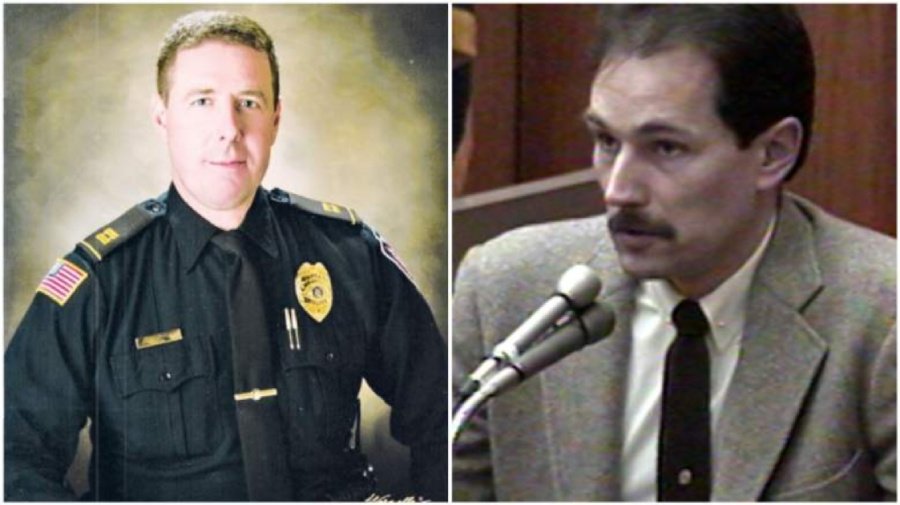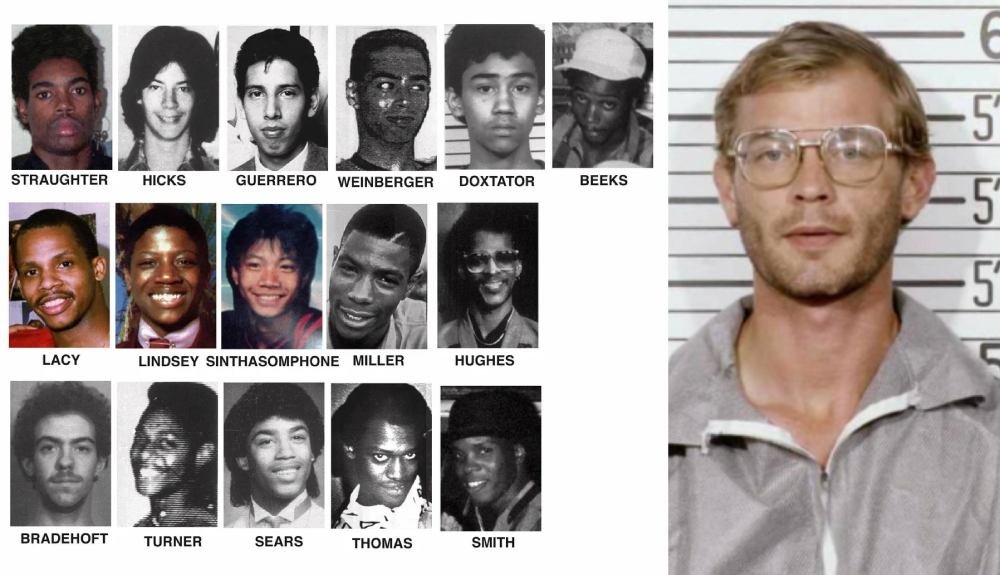The name Konerak Sinthasomphone may not be widely known, but his story is one that deserves to be told. Konerak was a young boy whose life was tragically cut short when he crossed paths with notorious serial killer Jeffrey Dahmer. His case brought to light serious failures within the Milwaukee police department and justice system that enabled Dahmer to continue his killing spree.
Fleeing Unrest in Laos
To understand Konerak’s roots, we must go back to Laos in the 1970s. Konerak was born in 1976 in the city of Vientiane, which served as the capital of the Laotian kingdom. His ethnic background was Laotian, and he was the son of Vientiane natives Khamphone and Numfonh Sinthasomphone. The Sinthasomphone family belonged to the Laotian middle class and resided in a modest home in the capital.

However, this period marked great turmoil in Laotian history. The Vietnam War had spilled over into Laos, and infighting between communist revolutionaries and royalist forces threw the country into civil war. By 1975, the communists had seized power, toppling the centuries-old monarchy. Many middle-class Laotians who had backed the royalists suddenly found themselves targeted under the new regime.
Fearing political persecution, the Sinthasomphone family joined the mass exodus of Laotian refugees fleeing their homeland. In 1979, Khamphone, Numfonh, and their three sons, Somsack, Konerak, and either Song or Kong, found asylum in the United States. They settled down in Milwaukee, Wisconsin, hoping to start a new life free from conflict.
Financial Struggles as Immigrants
Adjusting to American society proved challenging for the Sinthasomphone family. Language barriers and lack of familiarity with US customs hampered their assimilation. Additionally, their financial situation was precarious, as the jobs available to Laotian immigrants were mostly low-paying manual labor.
Milwaukee’s Laotian community struggled with poverty and faced friction with other ethnic groups, a plight mirrored in inner cities across America. Gang violence and crime afflicted neighborhoods like the Near North Side where the Sinthasomphones resided.
As the eldest son, Somsack tried contributing income by taking odd jobs from a young age. His younger brother Konerak also sought ways to help his family make ends meet. Their difficult financial circumstances would make them vulnerable targets for exploitation.
An Early Encounter With Jeffrey Dahmer
In 1987, a sinister predator by the name of Jeffrey Dahmer moved into the Oxford Apartments complex near the Sinthasomphones’ home. Dahmer, then 27, had recently been discharged from the US Army for alcohol abuse.

Unbeknownst to his neighbours, Dahmer harboured disturbing urges to commit violent acts on male victims. He began actively seeking out vulnerable individuals that he could lure to his apartment.
The following year, 13-year-old Somsack Sinthasomphone fell into Dahmer’s sights. Unemployed and impoverished, Somsack was willing to earn money any way he could. Dahmer approached the boy with an offer of $50 to come to his apartment and pose for nude photos. Likely desperate to provide for his family, Somsack agreed.
Tragically, upon arriving at Dahmer’s apartment in 1988, Somsack was drugged and subjected to sexual exploitation. Fortunately, he managed to escape from Dahmer’s clutches and return home with his life.
The deeply traumatized boy reported his ordeal to the police. Dahmer was arrested and charged with second-degree sexual assault and enticement of a minor.
A Woefully Inadequate Punishment
Considering the severity of Dahmer’s acts, one would expect harsh punishment. Shockingly, Dahmer only received a one-year prison sentence and five-year probation for the molestation.
He served a mere ten months in jail before being released in March 1990. Additionally, he was only required to register as a low-level sex offender.
Such a light sentence for child molestation highlights deep flaws in the justice system in the late 80s. With counselling and close monitoring, Dahmer may have been deterred from further violence. Instead, he faced negligible consequences that enabled his sick compulsions.
Tragically, Dahmer’s name would soon be burned into Milwaukee’s collective memory for the infamous killing spree that ensued.
Konerak’s Final Days
In 1991, Konerak Sinthasomphone had just turned 14. Despite his youth, he was known as a helpful and outgoing boy who assisted at a local Laotian Buddhist temple. Like his brother before him, Konerak sought to earn money to support his struggling immigrant family.
This vulnerability led the teen directly into the web of Jeffrey Dahmer. In May 1991, Dahmer once again utilized his ploy of offering payment for nude photos to lure Konerak to his apartment.
Promised $50 to $100, Konerak likely saw it as a chance to greatly help his parents and siblings. But tragically, just like Somsack three years prior, the boy found himself drugged and trapped with a monster.
Unimaginable Horrors
While inside Dahmer’s apartment, Konerak was subjected to unspeakable horrors. Dahmer terrorized the drugged teen for hours, strangling him until he was unconscious.
The madman then drilled a large hole in Konerak’s skull and poured hydrochloric acid into the cavity in an attempt at rudimentary lobotomy. Konerak somehow regained consciousness and retched in reaction to the excruciating pain, prompting Dahmer to strangle him once again into unconsciousness.
During this agonizing torture, Konerak managed to momentarily break free while Dahmer was distracted. Naked, injured, and with blood pouring from his skull, the boy made a desperate escape bid. Konerak made it outside to the street, where his pitiful state garnered attention from bystanders.
Tragic Police Blunder
Three local women discovered the severely disoriented Konerak wandering near Dahmer’s apartment building. They attempted to help him and called 911.
Officers John Balcerzak and Joseph Gabrish responded to the call, but ultimately handed Konerak back to Dahmer after being convinced he was his 19-year-old lover, according to court docs.

The men listed the incident as a “domestic squabble between homosexuals” and left Dahmer’s home shortly after.
′′At the time, with the information we had—to this day, I think we did the appropriate thing, the best that we could,′′ Balcerzak said in an interview after Jeffrey’s arrest, per AP News.
Dahmer murdered Konerak as soon as the cops left his apartment, he told police.
Five of Dahmer’s 17 gruesome murders, including the boy’s, happened after the women alerted police to Konerak.
“Despite the vigorous protestations of several African-Americans on the scene, the officers and Dahmer led Sinthasomphone back to Dahmer’s apartment, where the body of one of Dahmer’s victims lay unnoticed in an adjoining room. Concluding that Dahmer and Sinthasomphone were adult homosexual lovers, the officers ultimately left Sinthasomphone with Dahmer,” the Sinthasomphone family’s lawsuit states.
“Thirty minutes later, he became Dahmer’s thirteenth victim,” the suit states.
Becoming a Victim of Indifference
The actions of Officers Balcerzak and Gabrish have been widely condemned. There were many signs that should have alerted properly trained police that something was seriously wrong:
- Konerak’s age – he was a child, not a 19-year-old adult
- His incoherent state and inability to communicate or object
- Extensive injuries clearly from trauma rather than an accident
- The unlikely story offered by Dahmer that contradicted the evidence
However, the officers prioritized convenience and speed over doing their duty to protect a vulnerable boy. Their indifference and failure to investigate fully led them to hand Konerak over to be murdered shortly thereafter.
Konerak was not the first victim claimed by Dahmer since completing his woefully inadequate prison sentence for molesting Somsack Sinthasomphone. However, the officers’ actions enabled Dahmer to continue claiming more lives.
An Attempt At Justice
Public outcry erupted once the full extent of Dahmer’s crimes came to light. He was finally brought to justice in 1991 after murdering 17 victims.

Milwaukee Police Chief Philip Arreola swiftly terminated Officers Balcerzak and Gabrish for their misconduct in handling the Konerak Sinthasomphone case. However, the police union intervened, and they were later reinstated, remarkably with back pay.
The Sinthasomphone family filed a civil lawsuit against the City of Milwaukee for failing to protect Konerak. They reached a settlement of $850,000 in 1995.
While Konerak’s parents obtained some financial compensation, it could not make up for the loss of their child. No punishment given to the officers or Dahmer himself could undo this tragic failure to save an innocent life.
Remembering Konerak
Konerak Sinthasomphone deserves to be remembered as more than a name on a grim list of victims. He was a real person with loved ones whose lives were shattered by his death.

By all accounts, Konerak was a good-natured, helpful teenager who enjoyed sports and spending time with family members. He attended church services at the local temple and sometimes helped out there.
Had he lived, perhaps Konerak would have gone on to achieve his dreams, like any young American immigrant with talent and motivation. But his light was extinguished far too soon by the apathy and racism embedded in broken law enforcement systems.
May Konerak’s memory spur us to advocate for greater police accountability and more humane treatment of all groups in society. While nothing can undo this tragedy, we can still work to prevent such injustices from happening again.
Though gone, Konerak will live on in the hearts of those who knew him. And his story will remind us to keep fighting to fix the failures that led to his untimely death.
Read more from the website:









